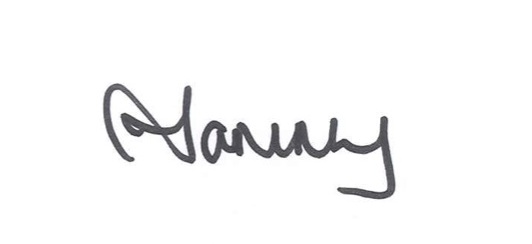With thanks to Bernd Vogel/Getty Images and HBR for the image
It’s just not the vibe
It used to be just a dating thing – but now “it’s just not the vibe” has been extended to the workplace.
A New York Post reports that Gen Z (born between 1997-2012) now have a set of criteria for accepting jobs – and it might not be what you think. Gone are the days when it was about pay and conditions, or even perhaps the obligatory gym membership. The report suggests that Gen Z workers now have a set of criteria for accepting jobs: their own office, manager passes the vibe test, too many white cis men, the right dress code, having to clean your own office and the big one – flexibility to work at home.
And before we think it’s a US related phenomena, just as I was writing this piece, a colleague shared with me exactly that comment: “I’m just not vibing with my Manager”..
It’s a thing!
What does the research tell us about what Gen Z are looking for in a new job?
If we dig a bit deeper about what the “vibe”; much of what has been reported goes to creating a non-toxic workplace culture – which we know is about being inclusive, respectful and with good leadership. We also know from recent research that a toxic work culture is the number 1 reason that people will leave a job.
What about other demographics, what are they looking for in a job?
Recent research in Australia shows the top considerations when looking for a new job are
- Pay
- Location/ease of commute
- Flexibility
- Career progression
- Strong work culture.
Interestingly, demographic analysis revealed that while higher income earners (those earning $90k or more per year) cited pay as a key consideration (69%), those earning less than $40k per year said they are more likely to be swayed by flexible working (63%) and the ease of commute (62%). 1 in 4 prospective employees is looking for a positive work culture, and 1 in 3 will stay in a role longer if there is a positive work culture.
What sorts of perks are existing employees looking for?
What has changed significantly recently is that Australian employees are looking to their employers to provide discounts on electricity, gas and water, petrol discounts, free meals and supermarket discounts, rather than the perks such as subsidised gym and yoga memberships.
The increased popularity of workplace benefits, especially those that offer monetary perks, can be linked to the state of employee’s financial health. A whopping 52% of all workers admit they have had difficulty meeting all of their financial commitments, with power bills (15%) and credit card balances (11%) providing the biggest problems.
It seems like the working environment continues to change – what’s the current state of play?
On the one hand, unemployment is at almost record low in Australia. Businesses are still telling stories of how difficult it is to find good workers. On the other hand, big employers are desperately trying to get employees back to the office at least a few days per week. So having a workplace that is attractive is a key to getting people to accept jobs and to stay in them.
As with everything – it’s about balance.
The cat is out of the bag in terms of flexibility and it’s unlikely that we will ever go back to working five days a week in the office. Interesting research cited in this HBR article found:
This presents a complicated challenge for company leaders: Full flexibility means employee well-being might be in jeopardy. But if you’re going to require employees to be in the office full-time, you may need to mitigate lower engagement and lower productivity.
One complicating factor Brecheisen (MD of the Gallup CHRO Roundtable) identifies is that people have different preferences about what their workday looks like. When asked whether they’d prefer to blend work and life activities throughout the day or have a clean divide between the two, workers split 50/50. And a mismatch between office policy and an employee’s preferred work style meant they were less engaged, more burned out, and more likely to look for a new job. “Leaders need to make sure they understand what their employees want before building solutions,” he writes. “Otherwise, mental health and productivity are both at risk.”
In terms of other components, it’s about listening to what employees value – flexibility is still number 1 but what else can employers easily offer that might make a different for their employees? And whilst we have talked about perks such as discounts etc that can cost money, there’s still really consistent research around career development, good communication and transparency – all of which can be offered at no or low cost to an employer.
The Takeaway
The data is clear. The costs are clear.
People are leaving and leaving because of what it is like to work for their employer.
And that employer could be you.
So, the takeaway is do you know why people are leaving your organisation? Do you know how people describe your corporate culture?
Could you be the next statistic?
What Australian employees want from their workplace
Want more still…….
If the above has whetted your appetite, and you’re keen for more.. Here are some ideas:
Does leadership interest you? You can sign up to my FREE seven day “Be a Better Boss Challenge” by clicking here. And you can click here to buy my book.
Want to chat? Click here to get in touch.
Want some help in meeting your goals? Sign up to the permission to dream programme, by clicking here.
Want more to read? You can read any of the 300+ blog posts on this site, by clicking here.
See you soon,



